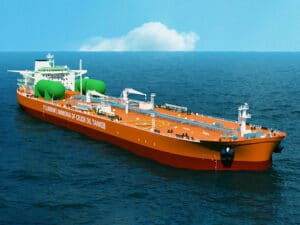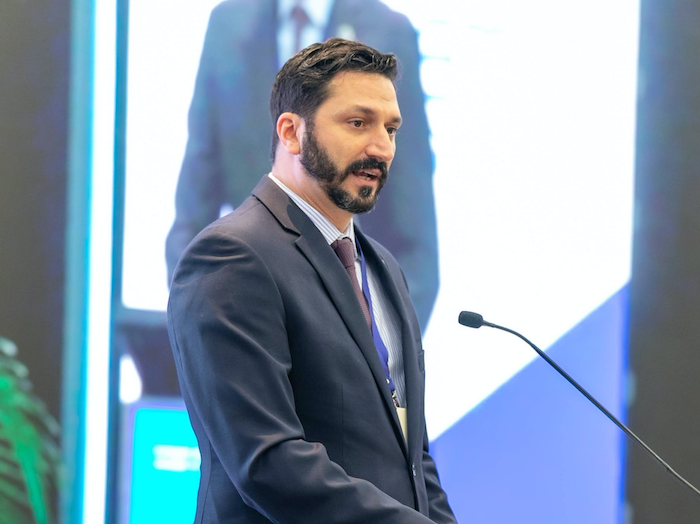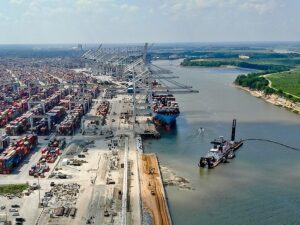
Op-Ed: Reframing marine assurance to meet shipping’s challenges
Written by Heather Ervin
Gonzalo Mera Truffini, Americas Executive Manager, MIS Marine
By Gonzalo Mera Truffini, Americas Executive Manager, MIS Marine
As the maritime industry faces a pivotal decade, driven by the need to accelerate sustainability and embrace digitalization, more onus should be placed on the advantages and differential role of technology and real-time data to underpin marine safety and decarbonization.
For as long as shipping has existed, the nature of the risks faced by vessels has never stood still—much less waited for the industry to act on those risks. Shipping continues to evolve today, not least as we seek to simultaneously decarbonize and digitalize vessel operations. This transformation has now led shipping to an inflection point, where the ability to access real-time, accurate data that plays a vital role in underpinning higher safety and environmental standards.
It is key that vessel owners, operators and managers across the shipping and energy sectors continue to build their knowledge around how the risks involved in any transformation can impact the long-term prospects of their business, while also focusing on the day-to-day fundamentals of safe, clean shipping and operational performance.
In this new era, marine assurance may be the answer to solving the dual challenge of decarbonization and digitalization. But first, the industry needs to understand why it is so important to their business and their future.
In brief, marine assurance is a holistic and systematic analysis of the different matters involved in maritime and offshore activities used to assure safe, environmentally friendly, and reliable operations. This includes a self-assessment of different types of vessels—including tankers, dry bulk, tugs and offshore vessels.
AUDITED PROCESSES
Processes that are audited include operator assessments, safety surveys, terminals and interfaces analyses (any point where multiple systems and processes are used when a ship’s cargo is transferred from vessel to vessel or vessel to terminal, for example), plus port state inspections. These are standardized questionnaires that cover all aspects of operational quality to produce a score that is used to benchmark against KPIs for different contracts and circumstances and that ideally shows continuous improvement over time. This can then provide the basis for a physical audit that verifies the self-assessment. This is all carried out with the goal of ensuring safe, pollution-free, and high-operational performance shipping.
Marine assurance first burst onto the scene of this complex industry around two decades ago. Since then, it has reduced the number and impact of oil spills from vessels and transformed the way the industry is performing maritime operations across the globe. What was at first a manual discipline has in fact always embraced technology; from paper checklists and tick boxes, through spreadsheets and digital record keeping.
Now, as the technology has continued to advance and new sources of data of greater accuracy has become more accessible, we can take another leap forward. By coupling new data sources—increasingly available in real-time—with the latest data science practices, analytical platforms and predictive modelling, international shipping is empowered with robust vetting and assurance solutions that help to underpin safety, sustainability, and regulatory compliance ensuring the performance of the maritime operations.
MARINE SAFETY & ENVIRONMENTAL PERFORMANCE
Marine assurance is often an unsung hero of marine safety and environmental performance. It is a business-critical discipline, thanks to its ability to support continuous improvements in maritime safety and environmental protection. What’s more, the systems and processes that were pioneered in tanker shipping are now applicable across a wide range of shipping and energy segments, spanning everything from terminal operations to bulk carriers, offshore oil & gas to wind farms.
As the understanding of risks in the maritime industry grow in magnitude, marine assurance systems must also progress in sophistication, not just to remain fit-for-purpose, but to constantly drive-up safety, and operational standards.
Those who fail to take the right action will be exposed to greater risks if marine assurance is put on the back burner. Quite aside from the crippling human and environmental consequences of a serious safety or environmental incident, the costs can also be measured in terms of lengthy downtime, legal fees, reputational damage, insurance costs, loss of investor support, and more. The scope of these risks can be summed up in the well-known concept of PEARL; People, Environment, Assets, Reputation & Liability.
The step-change in what is needed and what is now possible is reflected in the development of OCIMF’s SIRE 2.0 inspection regime. This will significantly expand the depth and quality of data gathered for marine assurance purposes during vessel inspections. The system is due to be launched in the second quarter of this year, and it will be a key ingredient in taking a more risk-based approach to assess the quality of a vessel, the safety management system and its crew.
It’s also crucial to remember that data is only as good as the ability for people to interpret it. This reinforces why marine assurance intelligence needs to be easily understood and manageable, and married with the right hands to guide organizations through these changes and to support the best possible decisions.
As the technology provider to OCIMF, MIS Marine has developed advanced marine assurance solutions, and deliver hands-on support for our customers. By combing technical, engineering and data science expertise, we’re at the forefront of guiding and empowering the industry through these changes. We will also be playing a leading role in supporting the transition to SIRE 2.0, advising on the most appropriate response based on each organizations’ needs, and championing the upsides for those that embrace this new regime.
Marine assurance can be instrumental in powering shipping’s shift towards ever higher safety, environmental and operational standards. By raising greater awareness and changing mindsets towards marine assurance, while embracing the advantages of digitalization and working in collaboration, we can strengthen maritime safety, drive up regulatory compliance, protecting the marine environment and ensuring reliable and sustainable operations.




